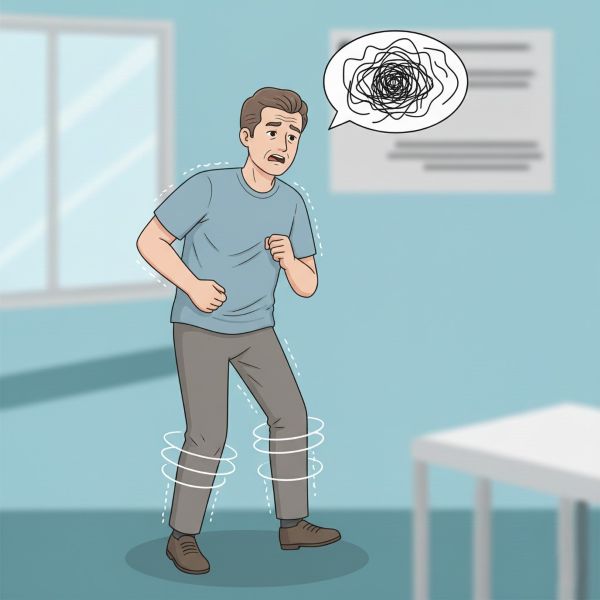Akathisia
Definition and Clinical Features
Akathisia is a movement disorder characterized by a subjective feeling of inner restlessness and a compelling urge to move. This internal tension manifests as repetitive, purposeless movements, such as rocking back and forth, repeatedly crossing and uncrossing the legs, shifting from one foot to another, or pacing. Moaning, humming, and groaning may also be features. Attempting to voluntarily suppress the movements can worsen the inner feeling of tension or anxiety.

Akathisia is characterized by an inability to remain still, often leading to repetitive movements like pacing, rocking, or shifting weight.
Causes and Pathophysiology
Akathisia is most commonly associated with neuroleptic (antipsychotic) medications, where it can be an acute or tardive (late-onset) side effect. It is also a recognized feature of Parkinsonism and Parkinson's disease. The pathophysiology is thought to be related to dopamine system dysfunction, particularly dopamine depletion or receptor blockade in certain brain pathways. This is supported by the fact that dopamine-depleting agents like tetrabenazine and reserpine can also cause akathisia.
Treatment
Management of drug-induced akathisia often begins with reducing or stopping the causative neuroleptic medication, although this can risk worsening an underlying psychosis. Several pharmacological options may help alleviate the symptoms, including:
- Centrally acting β-blockers, such as propranolol
- Anticholinergic agents
- Amantadine
- Benzodiazepines like clonazepam
- Clonidine
References
Sachdev P. Akathisia and restless legs. Cambridge: CUP, 1995
Cross References

